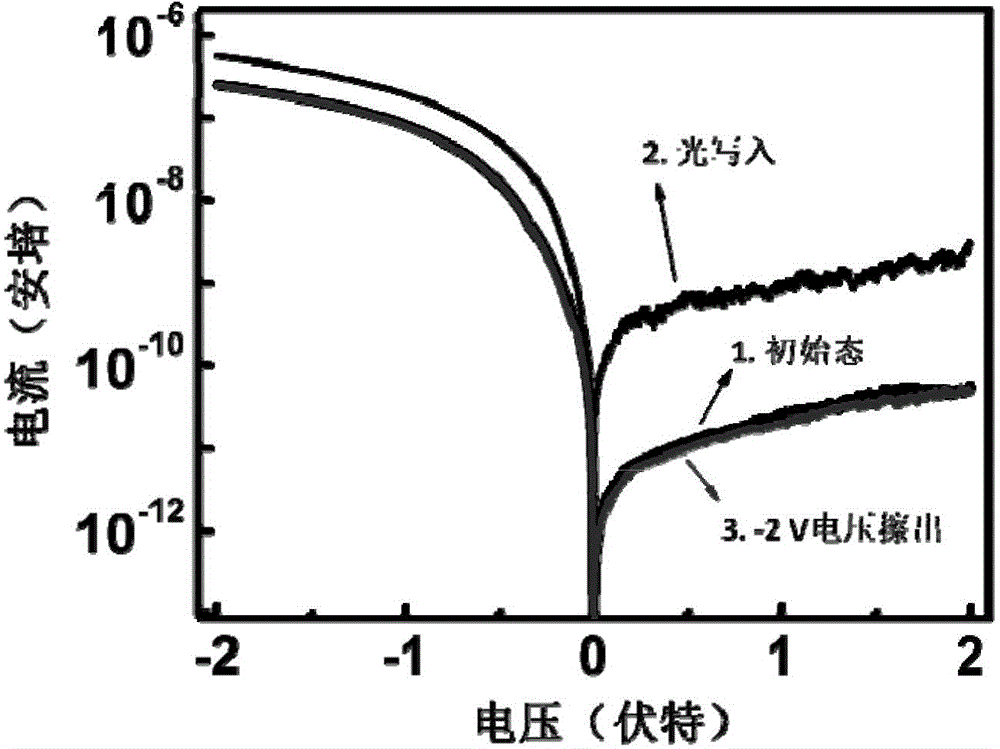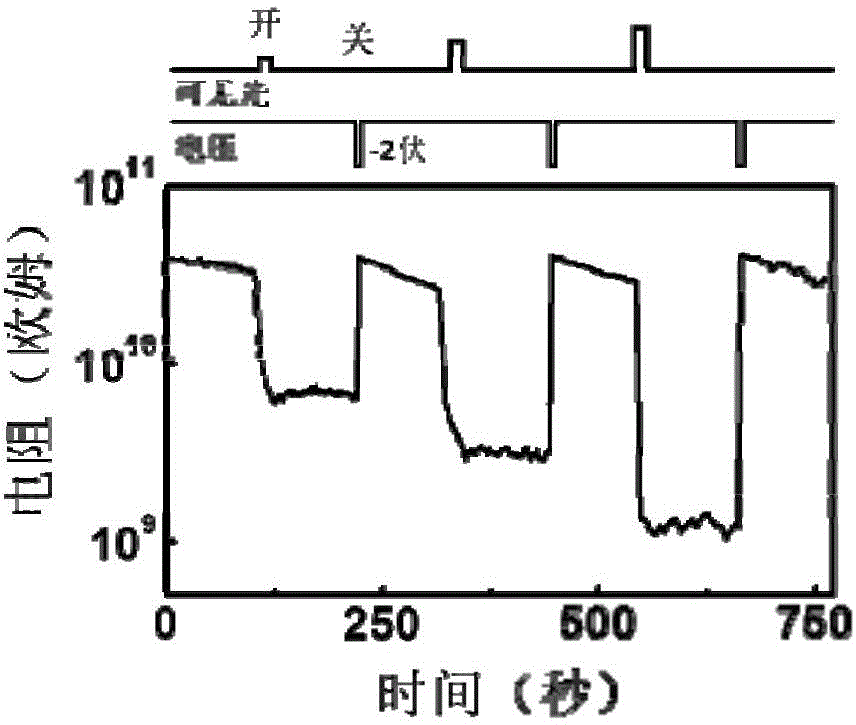Photoelectric information conversion element and application thereof
An information conversion and component technology, applied in the field of wide-spectrum response, can solve the problem that the conversion component does not have continuous photoconductivity, and achieve the effect of reducing resistance and increasing the degree of energy level bending.
- Summary
- Abstract
- Description
- Claims
- Application Information
AI Technical Summary
Problems solved by technology
Method used
Image
Examples
Embodiment 1
[0044] In this embodiment, the structure of the photoelectric information conversion element is as follows figure 1 As shown, including substrate, bottom electrode, dielectric layer and top electrode. The bottom electrode is located on the substrate, and the dielectric layer is located between the bottom electrode and the top electrode.
[0045] In this embodiment, the substrate is made of Si substrate; the bottom electrode is made of metal aluminum; the dielectric layer is made of cerium oxide film, preferably 20-30nm thick; the top electrode is made of ITO film, the thickness of which is 100um.
[0046] In this embodiment, the photoelectric information conversion element is prepared by coating method, which includes the following steps:
[0047] (1) The Si substrate was ultrasonically cleaned with acetone, ethanol, and deionized water for 10 minutes. After taking it out, it was blown dry with nitrogen, and then placed in the vacuum chamber of the electron beam evaporation s...
Embodiment 2
[0075] In this embodiment, the structure of the photoelectric information conversion element is basically the same as that in Embodiment 1, except that the dielectric layer uses a zinc oxide film instead of the cerium oxide film in Embodiment 1.
[0076] In this embodiment, the preparation method of the photoelectric information conversion element is basically the same as that in Embodiment 1, except that in step (2), a zinc oxide film is deposited by sputtering.
[0077] The photoelectric conversion properties of the photoelectric information conversion element were characterized using a Keithley 4200 semiconductor parameter measuring instrument, and the characterization method was the same as that in Example 1. The results show that the element has continuous photoconductive properties, that is, the light can change the resistance of the element, and the resistance can be restored to the initial state by using the reverse voltage. Therefore, the element is a wide-spectrum re...
PUM
 Login to View More
Login to View More Abstract
Description
Claims
Application Information
 Login to View More
Login to View More - R&D Engineer
- R&D Manager
- IP Professional
- Industry Leading Data Capabilities
- Powerful AI technology
- Patent DNA Extraction
Browse by: Latest US Patents, China's latest patents, Technical Efficacy Thesaurus, Application Domain, Technology Topic, Popular Technical Reports.
© 2024 PatSnap. All rights reserved.Legal|Privacy policy|Modern Slavery Act Transparency Statement|Sitemap|About US| Contact US: help@patsnap.com










